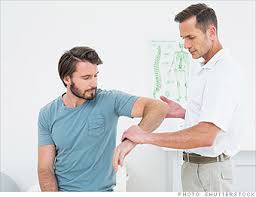Not only is knee pain uncomfortable but it can also make you difficult to move. Severe knee pain can even make you unable to move much. There are many ways to treat knee pain, but usually, you still have to go through a period of pain for some time. For this reason, if you experience knee pain, consult a specialist knee specialist los angeles, which can help you treat knee pain. Previously, identify the main things that often cause knee pain spectrum medical.

1. Injury
Tear in ligaments and tendons
Severe knee pain can be caused by an injury such as playing football or tennis, or it can be an injury at home, work, or an accident, which causes tears in the ligaments and tendons. Ligaments connect bones to joints, whereas tendons connect bones to muscles.
– Bleeding inside the knee
Injury can damage the bones and joints in the knee, causing cracks and bleeding that radiates to the joints. You will feel heat, stiffness, swelling, and bruises on your knees. Immediately check the knee specialist los angeles if your knee feels more painful and the swelling is getting bigger.
-Fracture
When your kneecap or other bones in your knee break, this will cause unbearable pain in the knee. Sometimes, these fragments from broken bones can damage joints and soft tissue in the knee.
2. Arthritis
-Rheumatic
Rheumatoid arthritis or rheumatoid arthritis is a disease that affects the joints and other tissues in the knee, causing inflammation. Rheumatism occurs when your immune system attacks the tissues in your own body which are not dangerous. Symptoms are pain, stiffness, heat, and swelling of the joints. This disease can also limit your movements and can even cause chest pain.
-Osteoarthritis
Osteoarthritis is the most common degenerative disease in the joints. Cartilage is a network of collagen. Located between the bones of your knee, its function is to reduce collisions and shocks.
-Lupus
Like rheumatism, lupus is also an autoimmune disease that occurs because the immune system attacks your own body. Lupus not only affects the knee, but also the skin, brain, kidneys, and other parts of the body. In addition to pain in the knee, you can also feel pain in the chest and difficulty breathing normally. Other symptoms are fever, malaise, and pain in the mouth.
-Uric acid
When your body stores too much uric acid, this can trigger inflammation in your joints which will then form crystals. Inflammation usually starts in certain joints in the knee, then spreads to other joints.
3. Baker cyst
If there is a buildup of fluid behind your knee, Baker cyst disease can occur. Baker cyst or Baker cyst usually only cause discomfort, not pain. However, if the cyst is open, you can feel extreme pain accompanied by swelling and bruising.
4. Osgood-Schlatter
Osgood-Schlatter’s disease is caused by an injury in the knee when the knee is not fully developed. Patients usually feel pain, swelling, and irritation. If you often play soccer, volleyball, or basketball, you run the risk of experiencing this problem.
5. Infection
-Infection in bones
Infection that often occurs in bones is osteomyelitis, which can be caused by bacteria or fungi. You can feel pain in the knee bones and other tissues, sometimes accompanied by fever and cold, as well as a burning sensation and swelling in the knee.
-Infections in the joints
Septic arthritis is a condition that occurs when bacteria or fungus land on your joints due to an injury or surgery. The pain can be quite severe, accompanied by swelling, redness, to fever. This is the most common type of acute arthritis.
Well, these things are the cause of knee pain. If you experience knee pain consult your knee at knee specialist los angeles immediately.

